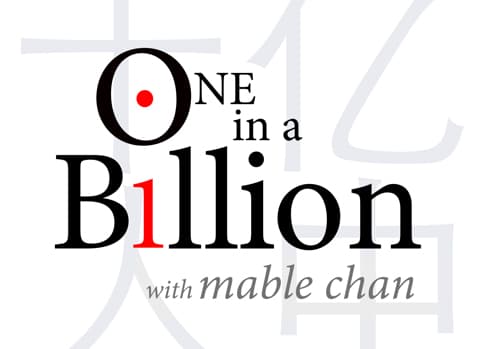Growing up, I was surrounded by strong females in my family. There was never a moment I doubted my abilities just because of my gender. Being in the Business school gave me a taste of professional life early. As I started attending guest speaker panels, corporate information sessions, and career fairs during my college freshman year in Maryland, I quickly learned that the road ahead of me would not paved with fair competition.
Being a woman defines a great part of who I am.
My interests on gender equality grew during college after reading Sheryl Sandberg’s Lean In, taking a women’s studies class, and writing my final English research paper on workplace inequality. The more I learn about the subject, the less I feel satisfied about where we stand today. The more International Women’s Days I celebrate, the more I’m reminded that striving to achieve workplace equality is not just a one-day attempt.
Earlier this year, I attended the International Women’s Day Forum, Partner With Purpose: Business for Gender Equality, held by the Chamber Foundation and U.S. Department of State. Listening to speakers from business community, civil society and government on their takes toward gender inclusion broadened my horizon on the matter. Furthermore, meeting other participants from different backgrounds sparked discussions which I found particularly inspiring.
Here are some of my main takeaways:
- Business for Gender Equality is not only the right way but also the smart way.
Having a diverse employee base is important. Your employee base reflects the products you want to deliver. As much as you’d like it to be neutral, it won’t be until you have a diverse community of employees. The worldwide women’s market is estimated to be US$18 trillion and women drive 70 to 80% of all consumer purchases. Diversity, specifically in this case gender diversity, matters. Having women on the executive team and at all levels makes a big difference.
- The importance of inclusive data gathering in our digitalized world.
Technology has shaken up how things are done and presented many opportunities. Yet, we have to make sure no one is left behind. As we progress to a more data-dependent model on decision making, it is vital to ensure the data we gathered are as inclusive as possible. As we use technologies to engage audience and deliver quality services, we have to ensure a gender-neutral design for the devices, and that those who were underprivileged have equal access to these resources. For example, A.I. software is only as smart as the data that used to train it. Today, and only 6% app developers are women and facial recognition software is biased towards white men.
- Inclusion drives equality, and diversity does not equal inclusion.
“Diversity” has not been a strange word in professional settings. How often we hear about something like “the number of our female employees doubled” or “we achieved the goal of having a minimum of 30% women on our board.” Although numbers can be reflective on efforts, it is not everything. Impact does not equate to numbers achieved. If you are just hiring for the quota, you are ignoring the fundamental problems. Diversity is only the surface, and inclusion is taking a step further.
- We have to engage men in the conversation, especially those who are in the position of influence.
Studies found that the key to successful gender parity programs requires the involvement of men. If we want to change how things are done within an organization, we cannot just engage half of the population, especially when men often hold more positions of power in this case. There is a general low psychological standing on the issue among men, and management has to clearly communicate that all employees have a legitimate role to play.
Goals are more achievable when we engage those from the other side of the table. This is true in any circumstances when a team consists of people from different backgrounds.
- #MeToo happened for good. Now what? #MENtorHer
#MeToo movement has been under the spotlight for quite some time now, but have we talked about this with our male colleagues or friends? Did we discuss with them, how we, or they, feel about it? Research from the New York Times prior to #MeToo indicated that 22% of men were reluctant to work alone with women, and recently, according to the LeanIn.org research, the number is up to 30%. Undeniably, #MeToo movement empowered millions of women to have their voice heard. As we strive to achieve the goal of ensuring a fair and safe workplace, we must also not discourage men mentoring women. #MeToo happened and started the conversation, and now we must move forward collectively and not forget the positive experiences.
- Invest in women.
Studies show that women reinvest up to 90% of their incomes back into their families, compared to just 30-40% by men. Investing in women has a multiplier effect—it is also investing in their children, their communities, and the world as a whole. Keeping girls in school increases a country’s GDP – as of now, one out of five girls in the developing world doesn’t even complete the sixth grade. There are trillions of dollars sitting untapped with women’s potential around the world.
( Find out more at Double X Economy, a blog by Professor Linda Scott from the University of Oxford who focuses her research on the potential for market-based approaches to provide economic empowerment for women in developing nations.)
- Spot our unconscious bias. Think before we speak or act.
The society conditions girls and boys differently. Girls are often told to be sweet pies and teacher’s pet, while boys are encouraged to have their own freedom and try new things. This becomes a problem when they develop their academic and professional interests. An example would be, most entrepreneurs are males because women are more likely to be held back by fears and insecurities. Sometimes, to support women in leadership or in the workplace is as simple as giving encouragement and be willing to take a chance for them. Unconscious bias is huge. We need to pause for a second before we speak or act. Think, how we form our presumptions and act, and modify the way our society set gender roles.
- Achieving gender inclusion in the workplace internally is a reciprocal relationship between the employer and employees.
Employees cannot just rely on upper management to solve problems. Changes happen faster from bottom-up, just like how grass-root movements are sometimes more effective than orders given from authorities. We have to hold ourselves accountable for the changes we’d like to see. That means for women, start asking questions, be more courageous and speak up, now!
- Keep ourselves educated on the issue.
Did you know that the gender gap actually widened last year? It is estimated that the gap in the workplace will take about 217 years to close. We have achieved considerably from the past century, but the fight is not over and don’t let the momentum stall.
Keep ourselves educated on the issue. We have to stay updated with our progress and understand what needs to be done next. We have to have a clear picture of reality in order to achieve the goal of closing the gender gap.
Human potential is the only unlimited resource. There is always something we can start doing today, such as supporting local woman-owned businesses, investing in start-ups by female entrepreneurs, mentoring female employees or students, or just simply providing support to female leaders or colleagues.
“I never worry about action, but only inaction.” – Winston Churchill
It takes a village to raise a child, it takes an ecosystem to empower a woman. We all have our own share in this ‘ecosystem’ and there is always something we could do to accelerate the change. At the end of the day, inaction only shows your privilege, and ignorance is not a valid excuse. Heroes can’t solve the most pressing problems in the world today, because all of us is part of the solution and change starts with small actions today.




